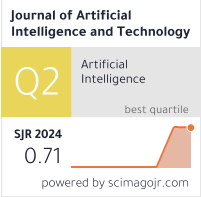Paper Drone Design Based on Pose Estimation Technology
DOI:
https://doi.org/10.37965/jait.2025.0589Keywords:
artificial intelligence, pose estimation, paper drones, motion control, data augmentationAbstract
Paper drones, as a low-cost green new type of drone, have played a role in various fields. However, traditional pose estimation methods have high requirements for cost and environment, and they are not suitable for paper drones. Therefore, in the context of artificial intelligence, a data augmentation method and vision-based pose estimation technology are proposed using deep learning algorithms. This technology is used to achieve accurate pose estimation and effective motion control of paper drones, and the effectiveness of this technology is verified. The experimental results show that the highest accuracy achieved by using data augmentation methods is 96.31%, and it can enhance the generalization performance of the algorithm. When using the technology proposed in the study for pose estimation, the average errors of roll angle, pitch angle, yaw angle are 0.07°, 0.18°, and 0.31°, respectively. When using the technology proposed in the study for motion control, the flight path is closest to the specified path. Research can effectively improve the pose estimation and motion control performance of paper drones, providing novel methods and ideas for the design of paper drones, which is of great significance for promoting the intelligent development of drone technology.
Downloads
Published
How to Cite
Issue
Section
License
Copyright (c) 2025 Authors

This work is licensed under a Creative Commons Attribution 4.0 International License.




